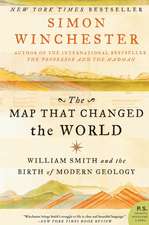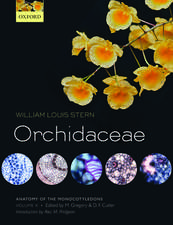The Aliveness of Plants: The Darwins at the Dawn of Plant Science
Autor Peter Ayresen Limba Engleză Paperback – 21 ian 2016
| Toate formatele și edițiile | Preț | Express |
|---|---|---|
| Paperback (1) | 425.46 lei 3-5 săpt. | +22.67 lei 7-13 zile |
| Taylor & Francis – 21 ian 2016 | 425.46 lei 3-5 săpt. | +22.67 lei 7-13 zile |
| Hardback (1) | 1057.09 lei 6-8 săpt. | |
| Taylor & Francis – apr 2008 | 1057.09 lei 6-8 săpt. |
Preț: 425.46 lei
Nou
Puncte Express: 638
Preț estimativ în valută:
81.41€ • 84.100$ • 67.38£
81.41€ • 84.100$ • 67.38£
Carte disponibilă
Livrare economică 15-29 martie
Livrare express 01-07 martie pentru 32.66 lei
Preluare comenzi: 021 569.72.76
Specificații
ISBN-13: 9781138663756
ISBN-10: 1138663751
Pagini: 242
Dimensiuni: 156 x 234 x 13 mm
Greutate: 0.45 kg
Ediția:1
Editura: Taylor & Francis
Colecția Routledge
Locul publicării:Oxford, United Kingdom
ISBN-10: 1138663751
Pagini: 242
Dimensiuni: 156 x 234 x 13 mm
Greutate: 0.45 kg
Ediția:1
Editura: Taylor & Francis
Colecția Routledge
Locul publicării:Oxford, United Kingdom
Cuprins
Chapter 1 Green Threads across the Ages: A Brief Perspective on the Darwins' Botany; Chapter 2 The Fortunes of the Darwins; Chapter 3 The Misfortunes of Botany; Chapter 4 Erasmus Darwin's Vision of the Future: Phytologia; Chapter 5 Charles Darwin's Evolutionary Period; Chapter 6 Charles Darwin's Physiological Period; Chapter 7 Charles Darwin, Francis Darwin and Differences with Von Sachs; Chapter 8 Francis Darwin, Cambridge and Plant Physiology; Chapter 9 Francis Darwin, Family and His Father's Memory; Chapter 10 Fortune's Favourites?; Chapter 11 Where Did the Green Threads Lead? The Botanical Legacy;
Descriere
The Darwin family was instrumental in the history of botany. Their experiences illustrate the growing specialization and professionalization of science in the nineteenth century. The author shows how botany escaped the burdens of medicine, feminization and the sterility of classification and nomenclature to become a rigorous laboratory science.



















